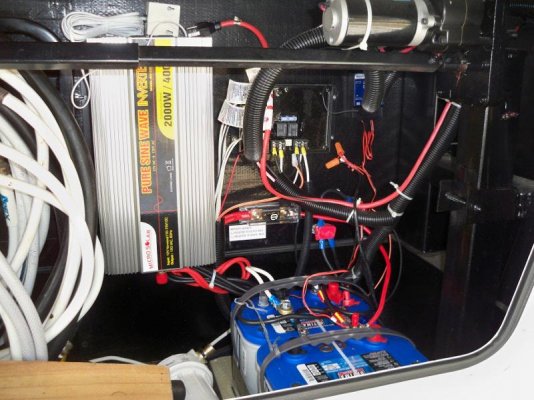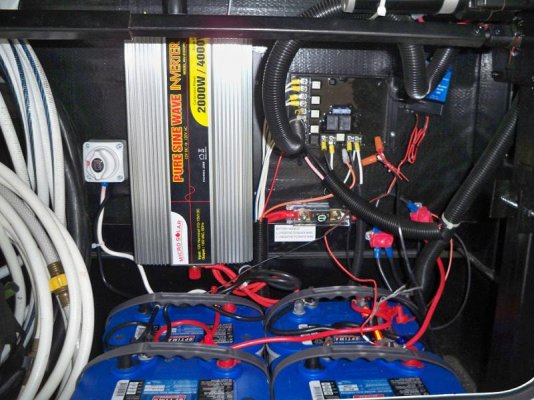Great Horned Owl
Well-known member
I am in the process of setting up my 5er. I put in a good sized battery bank and an inverter. When boondocking, I will plug the 30 amp plug into an outlet that is wired to the inverter. Before turning on the inverter, I will turn off the breaker to the converter.
I was thinking of wiring a relay to turn off the converter whenever the inverter is on, but I can't decide if it is really needed. My concern is that sooner or later, I will forget to turn off the converter. The inverter will be drawing battery power to supply the converter which will be charging the batteries. I am not sure exactly what will happen, but I suspect that it will not be good. At best, it will probably deplete the batteries fairly quickly.
Does anybody know what will really happen?
I was thinking of wiring a relay to turn off the converter whenever the inverter is on, but I can't decide if it is really needed. My concern is that sooner or later, I will forget to turn off the converter. The inverter will be drawing battery power to supply the converter which will be charging the batteries. I am not sure exactly what will happen, but I suspect that it will not be good. At best, it will probably deplete the batteries fairly quickly.
Does anybody know what will really happen?


